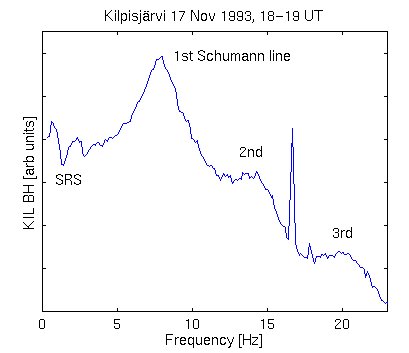 Ionospheric
Alfvén resonator
Ionospheric
Alfvén resonator Ionospheric
Alfvén resonator
Ionospheric
Alfvén resonatorspaceweb@oulu.fi - last update: 13 November 1998, 1140 UT (RR)
In 1976, Polyakov (1976) predicted the existence of ionospheric Alfvén resonator (IAR), equivalent to the ionospheric waveguide, but operating in vertical direction with shear Alfvén waves. According to the theory, further developed by Polyakov and Rapoport (1981), waves can be trapped between two altitudes characterized by large Alfvén velocity gradients: the lower limit occurs at ionospheric F-layer, the upper limit at about 3000 km. For a recent review, see, e.g., Lysak (1993).
 The so-called spectral resonance structures (SRS) discovered by Belyaev et al. (1989,
1990) are considered to be an evidence for IAR. They are thought to form within the IAR
from electromagnetic emissions of lightning charges, just like the Schumann
resonances. Up to fifteen bands can be observed, from the 1-2 Hz (Pc1
range) to well above the second Schumann resonance frequency at 14 Hz. After the original
finding of SRS at mid-latitudes, they have now been observed also at high-latitudes
(Belyaev et al., 1998; see also the figure).
The so-called spectral resonance structures (SRS) discovered by Belyaev et al. (1989,
1990) are considered to be an evidence for IAR. They are thought to form within the IAR
from electromagnetic emissions of lightning charges, just like the Schumann
resonances. Up to fifteen bands can be observed, from the 1-2 Hz (Pc1
range) to well above the second Schumann resonance frequency at 14 Hz. After the original
finding of SRS at mid-latitudes, they have now been observed also at high-latitudes
(Belyaev et al., 1998; see also the figure).
Note that it has been suggested that a special Pc1 pulsation type, the pearl pulsations, could be explained by IAR based Alfvén maser (Belyaev et al., 1984).
See also